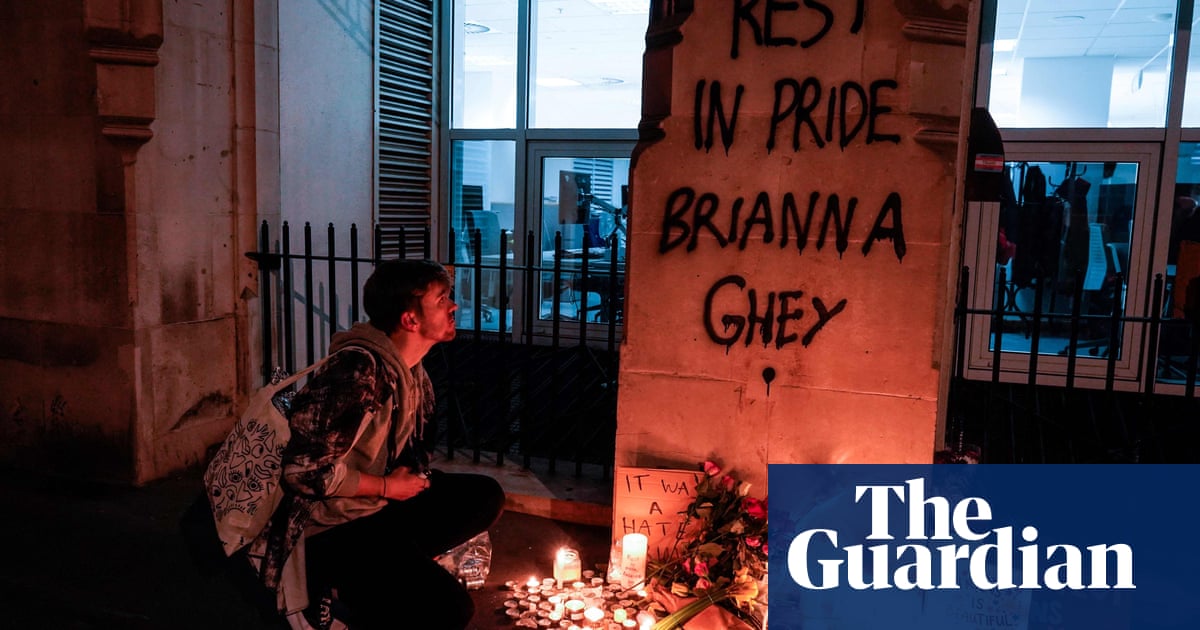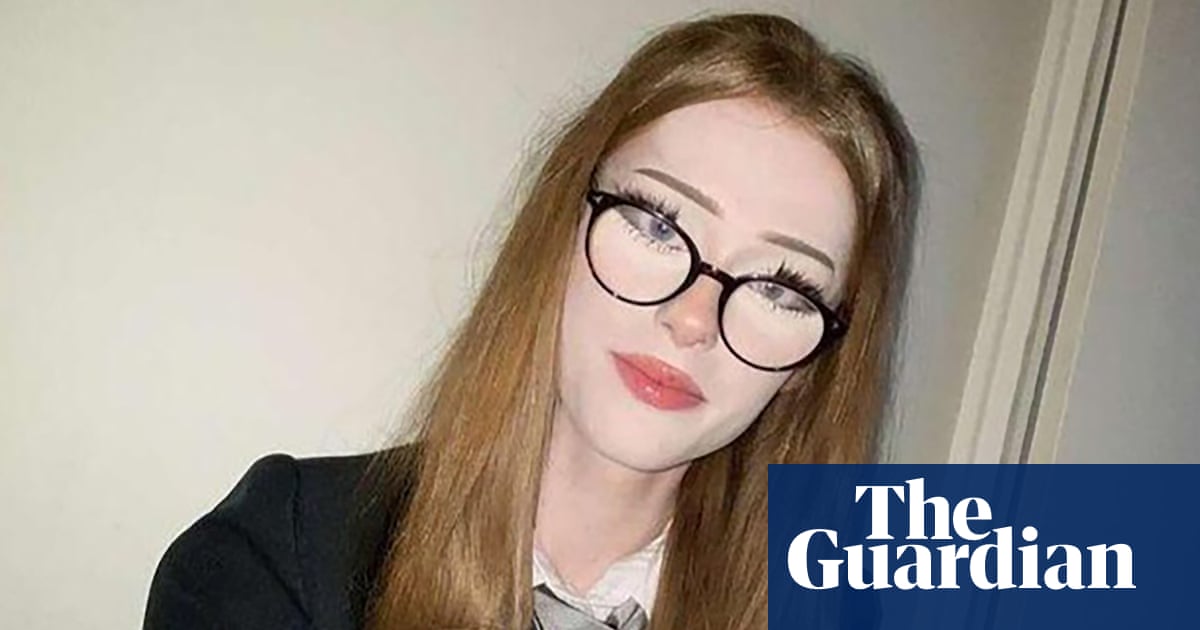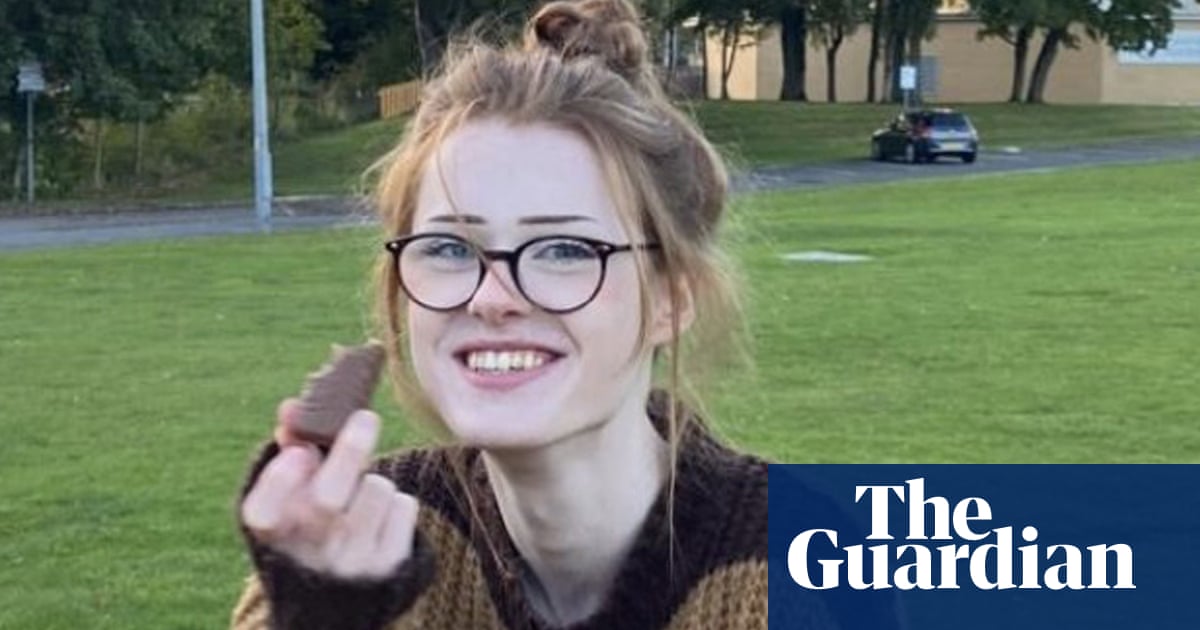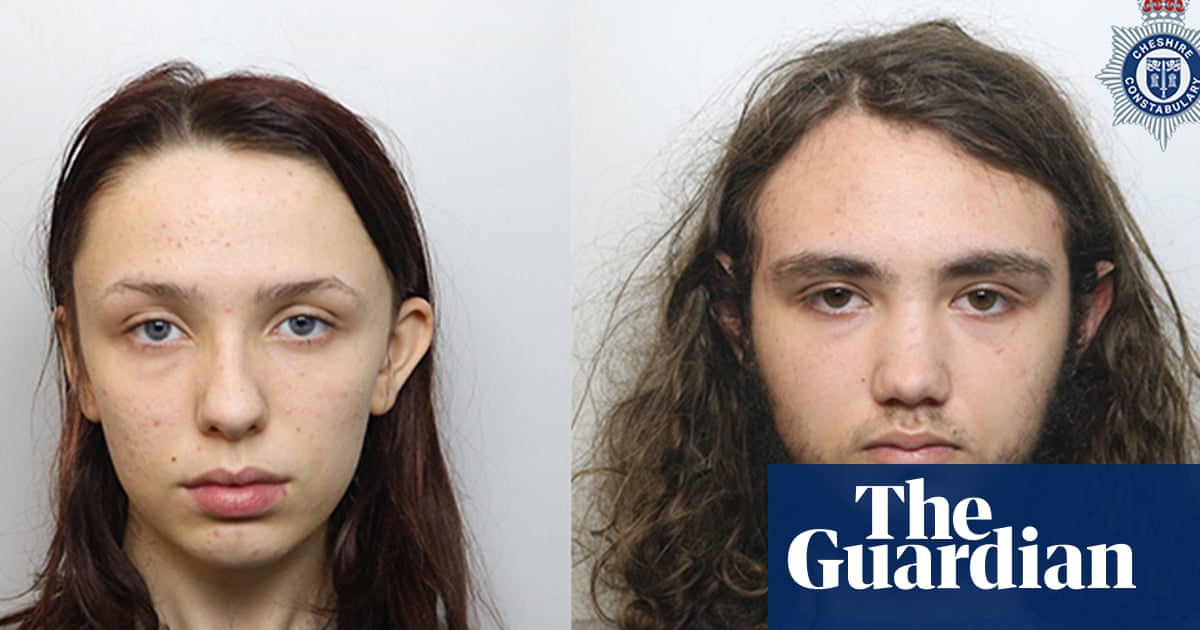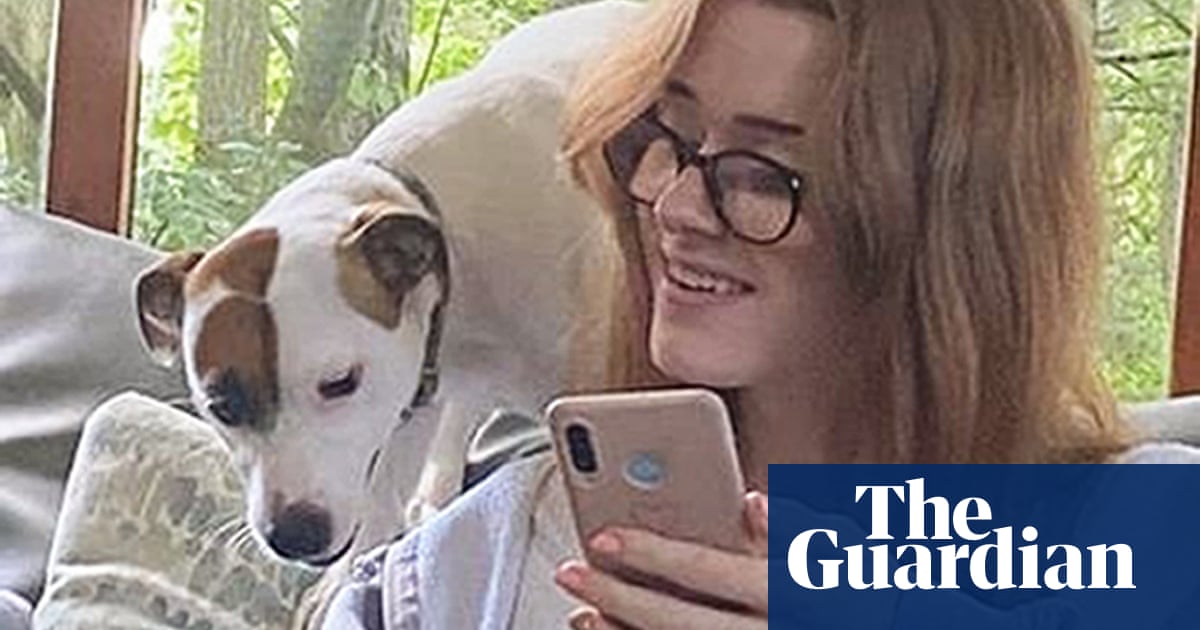
Emma Mills could not have imagined the consequences of accepting a quiet, shy year 11 girl into Birchwood high school in Warrington.
The headteacher knew Scarlett Jenkinson had left her last school under a cloud after bringing cannabis edibles into the playground midway through the autumn term of 2022, resulting in one child being hospitalised. Police were called but the child’s parents did not support a prosecution.
But the episode was viewed as an aberration among her old teachers, who insisted the bright teenager had been no trouble at all in the preceding four years. She was deemed low risk, and so Mills accepted Jenkinson on a “managed transfer”.
It is a decision Mills will regret for ever. “Hindsight is a wonderful thing. Obviously, if I could go back in time knowing what I know now, then I would not want Scarlett to come to our school at all,” she told the Guardian. “But unfortunately, there was absolutely no indication at all in any of her previous behaviours, or behaviours when she was at this school, that would indicate that she was capable in any way of what she did.”
Jenkinson had seemed completely normal, said Mills. “She was a quiet and polite student. She went to all of her lessons and got on with her work. The only concern we had is that her attendance started to drop off and her punctuality started to drop off. We had been very clear with her that her attendance needed to be at 96% otherwise she would be going back to her old school.”
On 2 February, nine days before Brianna was killed, Mills contacted nearby Culcheth high school to say they were sending Jenkinson back because her attendance had dipped to 80%.
But before the transfer could be arranged, Jenkinson took part in one of the most shockingly pre-meditated murders in recent history and was arrested and remanded into custody at a secure children’s home.
It was in year 7 at Culcheth, a large and well-regarded comprehensive school in Warrington, that Scarlett had met Eddie Ratcliffe. They were “frenemies” at first, she told police. He was “a weird kid”, she said. So was she, said Ratcliffe: “In year 8 she was saying she was a satanist.” She liked to say shocking things, he told police: “I’ll stab your nan, shag your cat.”
Jenkinson, who had three older brothers, lived with her family in Culcheth, while Ratcliffe and his brother and sister lived with their parents five miles away in Leigh. Outside school, their friendship was conducted mostly online, playing video games together, or chatting on WhatsApp. They became “really good friends”, Jenkinson told the jury.
Both were “really intelligent kids”, according to detective superintendent Mike Evans, head of crime for Cheshire police. Ratcliffe, who had represented the UK as a kickboxer as a child, wanted to study microbiology at university and passed eight GCSEs from the secure unit he has been held since his arrest on 12 February last year. Jenkinson was “bright and capable”, according to Mills.
Ratcliffe’s mother was a ski instructor and graphic designer and his father a manager of a truck company. Jenkinson’s mother taught food and design technology and her dad ran a building and plastering firm. All four attended court and looked visibly distraught to hear what their children had done.
It was Jenkinson who introduced Brianna into their conversations.
“I’m obsessed over someone I know but don’t have feelings for them … She’s called Brianna … I don’t know how to explain. Also she has a dick lol,” she wrote to Ratcliffe on 15 December 2022. He was intrigued, suggesting she found Brianna interesting “because the majority of people aren’t trans, it’s like going to a funeral and one person wears pink. You are going to be fascinated by their difference”.
Jenkinson had been at Birchwood for about six weeks by then, and the girls had become friends, apparently after she had admired Brianna’s eyeliner.
They would occasionally hang out after school, their paths rarely crossing during lessons. Brianna did not take part in many normal classes, having one-to-one tuition in the school’s “inclusion room” after diagnoses of attention deficit hyperactivity disorder (ADHD), autism spectrum disorder and anxiety.
Jenkinson also spent time in the inclusion room, she told the jury, saying she and Brianna both liked hanging out there “because neither of us liked to socialise much”.
Jenkinson had a boyfriend who was a year older, and at sixth form college. Their relationship was intense, with Ratcliffe telling police that Jenkinson once carved the boy’s name into her arm. She was “obsessed” with him, said Ratcliffe.
Before she decided she wanted to kill Brianna, Jenkinson told Ratcliffe she wanted his help to kill two boys from school. They had hurt her boyfriend, she told her friend, and so “deserved death”.
Brianna had come out as trans shortly after joining Birchwood in year 8, first changing her trousers for a skirt and then wearing a wig before switching to hair extensions and starting hormone treatment. “She was very out and proud as a trans girl,” said Mills.
The school knew Brianna had a large TikTok following and she would sometimes complain of nasty remarks online. But her gender identity was accepted by her peers, said Mills: “I think for this generation of students, they have lots of peers that are non-binary or transgender, and it doesn’t appear to be as big an issue for them as it may be for some people of older generations.”
Brianna had been treated in hospital for a time with an eating disorder, and found the return from Covid very difficult, remembered Mills. “She really really struggled after the lockdown. She didn’t like going out on to the corridors or to the canteen. So our special needs coordinator would take her down to the canteen and get a lunch with her and take her back to the inclusion building.”
Her mother, Esther Ghey, said in her victim impact statement: “Brianna was an extremely vulnerable teenager. As Brianna’s mother I was constantly worried that she was putting herself in risky situations. She was diagnosed with ADHD [attention deficit hyperactivity disorder] and ASD [autism spectrum disorder] as a teenager; with these conditions she found it extremely difficult to identify dangerous situations. Although, in this case, no one could have predicted that it was a dangerous situation for Brianna.”
Cheshire police believe the pair killed Brianna not because she was trans but because she was “vulnerable”, an easy target. Before they decided to murder her, they discussed various other victims, starting with M, a boy Ratcliffe thought was getting too close to a girl he fancied.
Eddie’s obsession with this girl, known as A, ran throughout the prosecution. When he and Jenkinson were not discussing murder methods, he was asking her for advice on asking A out. At one point Jenkinson asked for his help with a killing she was planning, “since I’m helping you with A”.
Within hours of the murder, Ratcliffe messaged Jenkinson a reminder that Valentine’s Day was coming up. “Now’s the time to ask [A out],” she replied.
Jenkinson seemed the driving force behind their murderous plotting, apparently influenced by films she watched on the dark web, as well as on ordinary streaming platforms – with Sweeney Todd being a favourite film, along with Dirty Dancing. She boasted of having “a really sharp blade, the same one that Sweeney Todd uses”, and made up a story about previously having murdered a boy called Laydon.
The prosecution floated the idea that Ratcliffe was her willing executioner, if not her assassin. She saved his contact on her tablet as “Tesco John Wick”: a cut-price version of the hitman played by Keanu Reeves in the Hollywood film franchise.
In her bedroom she kept a journal in which she listed Ratcliffe’s attributes, which included “trustworthy”, “very very smart, genius level” and “sociopath”.
She also wrote notes on her favourite serial killers (Richard Ramirez, Jeffrey Dahmer, Harold Shipman and John Wayne Gacy, AKA the Killer Clown), and had drawn out a spider diagram exploring the differences between good and evil. There was also an ominous list of initials written under the heading: “People that need to go”.
At the sentencing hearing on Friday, the court heard that another “kill list” had been found at Jenkinson’s secure unit, which referred to “a number of people who were caring for her”.
She once told Ratcliffe: “I’m good at hiding stuff and playing victim”.
Though he was an active participant in many of their murderous conversations, she seemed to be the one more excited by the idea of killing Brianna, and impatient to get it done. She wanted to pull the murder forward, only for Ratcliffe to reply: “It’s a school night. I can’t.” Plus, he said, he was not going to risk taking a knife to school.
A few days before the murder, Jenkinson texted to say: “I’m excited about Saturday”. Ratcliffe replied: “Why?” before remembering what they had planned. “Oh yeah,” he said, “I forgot”.
It was Jenkinson who suggested they go to Linear Park to kill Brianna, saying she often went there to walk her dog and knew a good secluded spot. They actually planned to murder her two weeks earlier, only for Brianna to cancel at the last minute because of a family meal. Jenkinson and Ratcliffe went to the park anyway, in what police view as a dry run.
Jenkinson invited Brianna to the park again on 11 February, saying she was going to get “absolutely shitfaced and high af [as fuck]”. She asked Ratcliffe what sort of knife he was bringing. “I showed you in person as well as on the phone,” he replied. “And that will definitely 100% kill her?” she checked.
Police found a chef’s knife in Jenkinson’s bedroom, alongside a note, which detailed the murder plan. She said she used it to self-harm, and only her blood was found on the blade.
It was Jenkinson who introduced the idea of taking body parts from their victims, saying she’d like one of Brianna’s “pretty eyes”. She took a photo of Brianna at the park shortly before the killing, the court heard.
It was only after they were charged with murdering Brianna that Ratcliffe was diagnosed with anxiety and autism spectrum disorder, and Jenkinson with “traits” of ADHD and autism.
A psychiatrist who assessed Jenkinson for a second time after her conviction modified his view, saying he now believed she actually suffered from a “form of antisocial personality disorder, rather than a mental illness”.
Dr Richard Church said Jenkinson has “conduct dissocial disorder”, with “limited pro-social emotions”. It was to Church that Jenkinson made a series of admissions, claiming that she had lied to the jury when she said Ratcliffe killed Brianna.
She told him that she stabbed Brianna “repeatedly” and had found it “exciting”, and that she killed her because she thought Brianna would stop being her friend. She murdered her so Brianna would “always be with her”, the court heard.
Giving evidence, Jenkinson said that she had questioned her own gender identity and self-harmed “as a coping mechanism”. She said she had previously been seen by the child and adolescent mental health service (Camhs), and had previously thought of killing herself.
She told Ratcliffe she was bipolar and had hallucinations. She had not been diagnosed with any mental disorder prior to the killing, though the jury heard that on 29 May 2022 she made a 999 call claiming to have been stalked by a boy called Laydon. Police investigated but could not identify anyone by that name.
Multiple psychiatrists have assessed the teenagers since their arrests. None have identified elements of psychosis or psychopathy that could come close to providing an explanation for their horrific act.
Ultimately, they seem to have murdered Brianna for entertainment. Jenkinson’s texts come closest to providing a motive, however facile. She told Ratcliffe she wanted to stab Brianna at least once, “cos it’s fun lol”.
Chris Hunt, headteacher at Culcheth High School, declined a request for an interview but said in a statement: “We offer our deepest sympathies to Brianna’s family, friends and those who knew and loved her.
Since this tragic event, we have been working closely with partner agencies across Warrington. This will continue as part of the local child safeguarding practice review into this distressing incident and in line with wider safeguarding considerations.”




